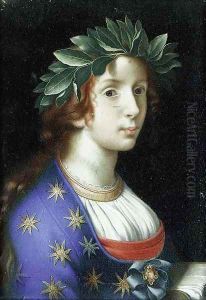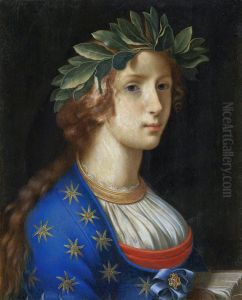Giuseppe Sacconi Paintings
Giuseppe Sacconi was an Italian architect, born on July 5, 1854, in Montalto delle Marche, a small town in the province of Ascoli Piceno. He is most famously known for his design of the Vittoriano, the monument to King Victor Emmanuel II, located in Rome.
Sacconi studied art and architecture at the Academy of Fine Arts in Florence, where he was influenced by the prevailing neoclassical style. His approach to architecture was marked by a respect for tradition and a desire to continue the classical language of architecture, which was popular in Italy at the time.
In 1884, Sacconi won a national competition to design the Vittoriano. His project was selected from among 311 entries, and it was a career-defining moment for him. The monument's architecture incorporates grand stairways, Corinthian columns, and an equestrian statue of Victor Emmanuel II, reflecting the grandeur and dignity that Sacconi sought to convey. The structure also features the Altare della Patria (Altar of the Fatherland) and the Tomb of the Unknown Soldier, which became central elements of Italian national identity.
Sacconi's work on the Vittoriano continued for the rest of his life, though he did not live to see its completion. The monument was completed posthumously, with construction continuing well after his death in 1905. The Vittoriano's completion in 1911 marked the 50th anniversary of Italian unification.
Aside from the Vittoriano, Sacconi worked on various other projects, including the restoration of the Basilica of Loreto and the design of the Cimitero Monumentale (Monumental Cemetery) in Brescia. His contribution to Italian architecture was significant, and his works are still studied and admired for their classical beauty and national symbolism.
Giuseppe Sacconi died on August 23, 1905, in San Benedetto del Tronto. His legacy is closely tied to the Vittoriano, which remains one of the most iconic landmarks in the city of Rome and a testament to his architectural vision.

